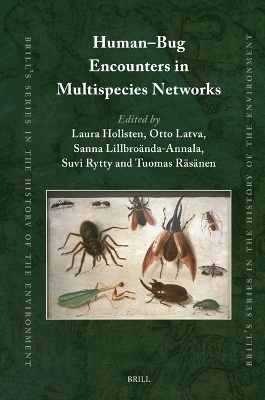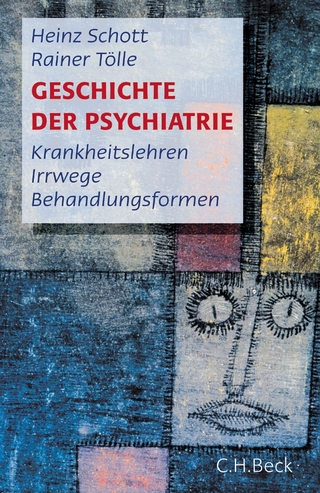
Human–Bug Encounters in Multispecies Networks
Brill (Verlag)
978-90-04-68060-9 (ISBN)
While providing a basis for all ecosystems, bugs such as insects and arachnids also destroy crops and indirectly kill humans and other animals by the millions. This book illuminates the many ways in which human lives affect and are affected by bugs as part of a wider network of species. 14 chapters reveal how knowledge, ideas, and emotions related to bugs are historically and culturally formed. With many bug populations in free fall, how can humans and bugs coexist? This book examines this question and offers a new ethics for this coexistence.
Contributors are Michaela Fenske, Minna Santaoja, Concepción Cortés Zulueta, Heidi Mikkola, Laura Hollsten, Sophie FitzMaurice, Otto Latva, Marianne Mäkelin, Taina Syrjämaa, Suvi Rytty, Sanna Lillbroända-Annala, Emily Webster, Karine Aasgaard Jansen, Heta Lähdesmäki, and Tuomas Räsänen.
Laura Hollsten, Ph.D. (2005), Åbo Akademi University, Finland, is a researcher specialised in environmental history at that university. Her research interests include human-animal studies, early modern environmental history, the history of knowledge and science, and global history. Otto Latva, Ph.D. (2019), University of Turku, Finland, is a historian focusing on human-animal and human-plant studies as well as environmental history. Latva is the author of the monograph The Giant Squid in Transatlantic Culture: The Monsterization of Molluscs (2023). Sanna Lillbroända-Annala, Ph.D. (2010), Åbo Akademi University, Finland, is an ethnologist and senior lecturer at that university. She has conducted research in urban environments from the perspective of gentrification and cultural heritage, lately with special interest towards non-humans in urban settings. Suvi Rytty, Ph.D. (2021), University of Turku, Finland, is a postdoctoral researcher specializing in the history of medicine and health. Her research interests include the history of the natural way of life, alternative medicine, vegetarianism and anti-vaccinationism. Tuomas Räsänen, Ph.D. (2015), University of Turku, Finland, is a Professor of environmental history at the University of Eastern Finland. He has studied the history of human-wildlife relationships and marine environmental history. He has been leading the research project Humans and Ticks in the Anthropocene.
List of Figures
Notes on Contributors
Introduction
Laura Hollsten, Suvi Rytty, Otto Latva, Sanna Lillbroända-Annala and Tuomas Räsänen
Part 1: Ethics
1 Becoming Aware of Insects: Dangers and Endangerments in the Anthropocene
Michaela Fenske
2 Deconstructing Wasp Aggression: Proposing a Critically Anthropomorphic Narrative of Shared Vulnerability
Minna Santaoja
Part 2: Insects and Human Gaze
3 Fly Eyes and Insect Vision at the Turn of the 20th Century: from Scientific Curiosity to Compound Menace
Concepción Cortés Zulueta
4 Encounters with the Insect World: Care and Human – Insect Relationships in Wildlife Documentaries
Heidi Mikkola
Part 3: Science and Knowledge
5 Wild Spiders in Fragile Knowledge Networks: Spiders in Medicine, Natural History, and Silk Production in Eighteenth-Century Europe
Laura Hollsten
6 Valuing Birds and Insects in America, c. 1815–1920: a Multispecies Perspective
Sophie FitzMaurice
7 From Harmless Nuisance to Frightening Enemy: the Perceptions of Ticks in Finland before the Beginning of the Tick Hysteria in the 1990s
Otto Latva
8 Anopheline Mobilities and More-Than-Mosquito Biopolitics in Making Biotechnology
Marianne Mäkelin
PART 4: Bodies at Risk
9 Clandestine Agents in Meadows: Ticks, Cattle and Redwater Fever in Finland, 1860s–1930s
Taina Syrjämaa
10 Social Construction of Tick-Borne Diseases from the 1950s to the Twenty-First Century: a View From the History of Medicine
Suvi Rytty
11 Tick Smart: Practices and Materializations in Human – Tick Entanglements
Sanna Lillbroända-Annala
PART 5: Multispecies Networks
12 Fleas, Knowledge-Making, and the Epidemiology of Plague in British India: Perspectives from the Bombay Epidemic, 1905–1906
Emily Webster
13 Epidemic Encounters: Mingling with Mosquitoes in Réunion and Mauritius
Karine Aasgaard Jansen
14 Humans, Ticks, and the Conflict over the Cervids
Heta Lähdesmäki and Tuomas Räsänen
Index
| Erscheint lt. Verlag | 19.12.2024 |
|---|---|
| Reihe/Serie | Brill's Series in the History of the Environment ; 8 |
| Verlagsort | Leiden |
| Sprache | englisch |
| Maße | 155 x 235 mm |
| Gewicht | 1 g |
| Themenwelt | Studium ► Querschnittsbereiche ► Geschichte / Ethik der Medizin |
| Naturwissenschaften ► Biologie | |
| ISBN-10 | 90-04-68060-8 / 9004680608 |
| ISBN-13 | 978-90-04-68060-9 / 9789004680609 |
| Zustand | Neuware |
| Informationen gemäß Produktsicherheitsverordnung (GPSR) | |
| Haben Sie eine Frage zum Produkt? |
aus dem Bereich


